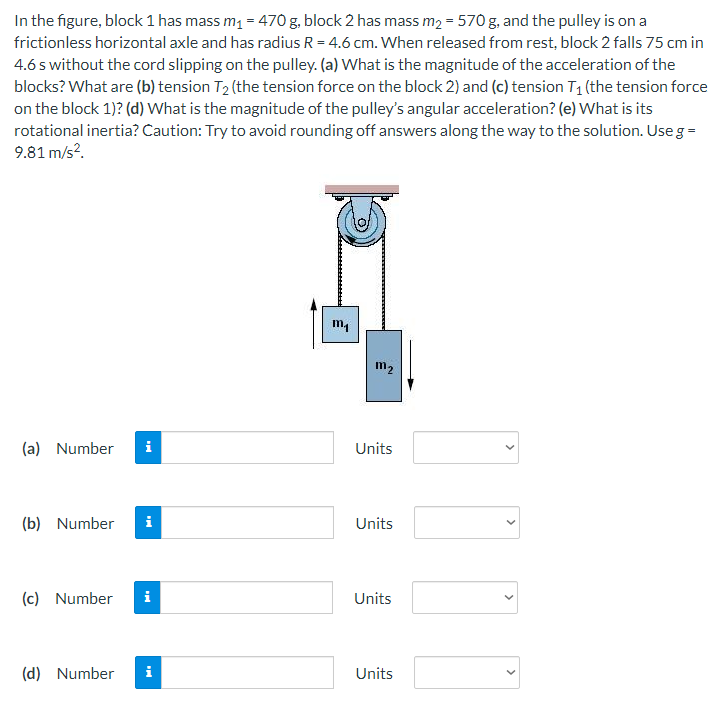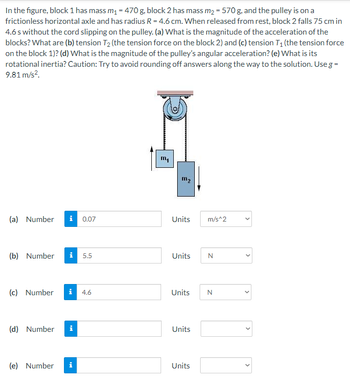In the figure, block 1 has mass m₁ = 470 g, block 2 has mass m₂ = 570 g, and the pulley is on a frictionless horizontal axle and has radius R = 4.6 cm. When released from rest, block 2 falls 75 cm in 4.6 s without the cord slipping on the pulley. (a) What is the magnitude of the acceleration of the blocks? What are (b) tension T₂ (the tension force on the block 2) and (c) tension T₁ (the tension force on the block 1)? (d) What is the magnitude of the pulley's angular acceleration? (e) What is its rotational inertia? Caution: Try to avoid rounding off answers along the way to the solution. Use g = 9.81 m/s². m₁ m₂
Simple harmonic motion
Simple harmonic motion is a type of periodic motion in which an object undergoes oscillatory motion. The restoring force exerted by the object exhibiting SHM is proportional to the displacement from the equilibrium position. The force is directed towards the mean position. We see many examples of SHM around us, common ones are the motion of a pendulum, spring and vibration of strings in musical instruments, and so on.
Simple Pendulum
A simple pendulum comprises a heavy mass (called bob) attached to one end of the weightless and flexible string.
Oscillation
In Physics, oscillation means a repetitive motion that happens in a variation with respect to time. There is usually a central value, where the object would be at rest. Additionally, there are two or more positions between which the repetitive motion takes place. In mathematics, oscillations can also be described as vibrations. The most common examples of oscillation that is seen in daily lives include the alternating current (AC) or the motion of a moving pendulum.

Step by step
Solved in 2 steps with 2 images

D and E please


